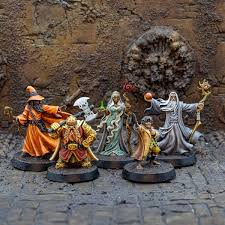Booklet: Booklet-Flowers, bird and butterfly (Berlin 1985)
Booklet-Flowers, bird and butterfly (Berlin 1985)
15 October (Berlin ) within release Welfare: Miniatures goes into circulation Booklet Booklet-Flowers, bird and butterfly face value 5*(60+30) German pfennig
| Booklet Booklet-Flowers, bird and butterfly in catalogues | |
|---|---|
| Michel: | Mi: DE-BE 745DCV-MH |
Booklet is square format.
with Michel Nr. 5x745 Private edition of-“Deutscher Caritas Verband”Also in the issue Welfare: Miniatures:
- Stamp - Scattered flowers, berries, birds and insects face value 60+30;
- Stamp - Scattered flowers, berries, birds and insects face value 80+40;
- Stamp - Scattered flowers, berries, birds and insects face value 120+60;
- Booklet - Booklet-Flowers, bird and butterfly face value 5*(60+30);
- Booklet - Booklet-Flowers, bird and butterfly face value 5*(60+30);
- Booklet - Booklet-Flowers, bird and butterfly face value 5*(60+30);
- Booklet - Booklet-Flowers, bird and butterfly face value 6*(60+30);
- Booklet - Booklet-Flowers, bird and butterfly face value 5*(60+30);
- Booklet - Booklet-Flowers, bird and butterfly face value 5*(60+30);
- Booklet - Booklet-Welfare Flowers, bird and butterfly face value 4*(80+40);
Booklet Booklet-Flowers, bird and butterfly it reflects the thematic directions:
A book is a medium for recording information in the form of writing or images. Books are typically composed of many pages, bound together and protected by a cover. Modern bound books were preceded by many other written mediums, such as the codex and the scroll. The book publishing process is the series of steps involved in their creation and dissemination.
Butterflies are insects in the macrolepidopteran clade Rhopalocera from the order Lepidoptera, which also includes moths. Adult butterflies have large, often brightly coloured wings, and conspicuous, fluttering flight. The group comprises the large superfamily Papilionoidea, which contains at least one former group, the skippers (formerly the superfamily "Hesperioidea") and the most recent analyses suggest it also contains the moth-butterflies (formerly the superfamily "Hedyloidea"). Butterfly fossils date to the Paleocene, which was about 56 million years ago. Butterflies have the typical four-stage insect life cycle. Winged adults lay eggs on the food plant on which their larvae, known as caterpillars, will feed. The caterpillars grow, sometimes very rapidly, and when fully developed, pupate in a chrysalis. When metamorphosis is complete, the pupal skin splits, the adult insect climbs out, and after its wings have expanded and dried, it flies off. Some butterflies, especially in the tropics, have several generations in a year, while others have a single generation, and a few in cold locations may take several years to pass through their whole life cycle. Butterflies are often polymorphic, and many species make use of camouflage, mimicry and aposematism to evade their predators. Some, like the monarch and the painted lady, migrate over long distances. Many butterflies are attacked by parasites or parasitoids, including wasps, protozoans, flies, and other invertebrates, or are preyed upon by other organisms. Some species are pests because in their larval stages they can damage domestic crops or trees; other species are agents of pollination of some plants. Larvae of a few butterflies (e.g., harvesters) eat harmful insects, and a few are predators of ants, while others live as mutualists in association with ants. Culturally, butterflies are a popular motif in the visual and literary arts.
A flower, sometimes known as a bloom or blossom, is the reproductive structure found in plants that are floral (plants of the division Magnoliophyta, also called angiosperms). The biological function of a flower is to effect reproduction, usually by providing a mechanism for the union of sperm with eggs. Flowers may facilitate outcrossing (fusion of sperm and eggs from different individuals in a population) or allow selfing (fusion of sperm and egg from the same flower). Some flowers produce diaspores without fertilization (parthenocarpy). Flowers contain sporangia and are the site where gametophytes develop. Many flowers have evolved to be attractive to animals, so as to cause them to be vectors for the transfer of pollen. After fertilization, the ovary of the flower develops into fruit containing seeds. In addition to facilitating the reproduction of flowering plants, flowers have long been admired and used by humans to beautify their environment, and also as objects of romance, ritual, religion, medicine and as a source of food.
In miniature wargaming, players enact simulated battles using scale models called miniature models, which can be anywhere from 2 to 54 mm in height, to represent warriors, vehicles, artillery, buildings, and terrain. These models are colloquially referred to as miniatures or minis
Flora is the plant life occurring in a particular region or time, generally the naturally occurring or indigenous—native plant life. The corresponding term for animal life is fauna. Flora, fauna and other forms of life such as fungi are collectively referred to as biota. Sometimes bacteria and fungi are also referred to as flora, as in the terms gut flora or skin flora.





